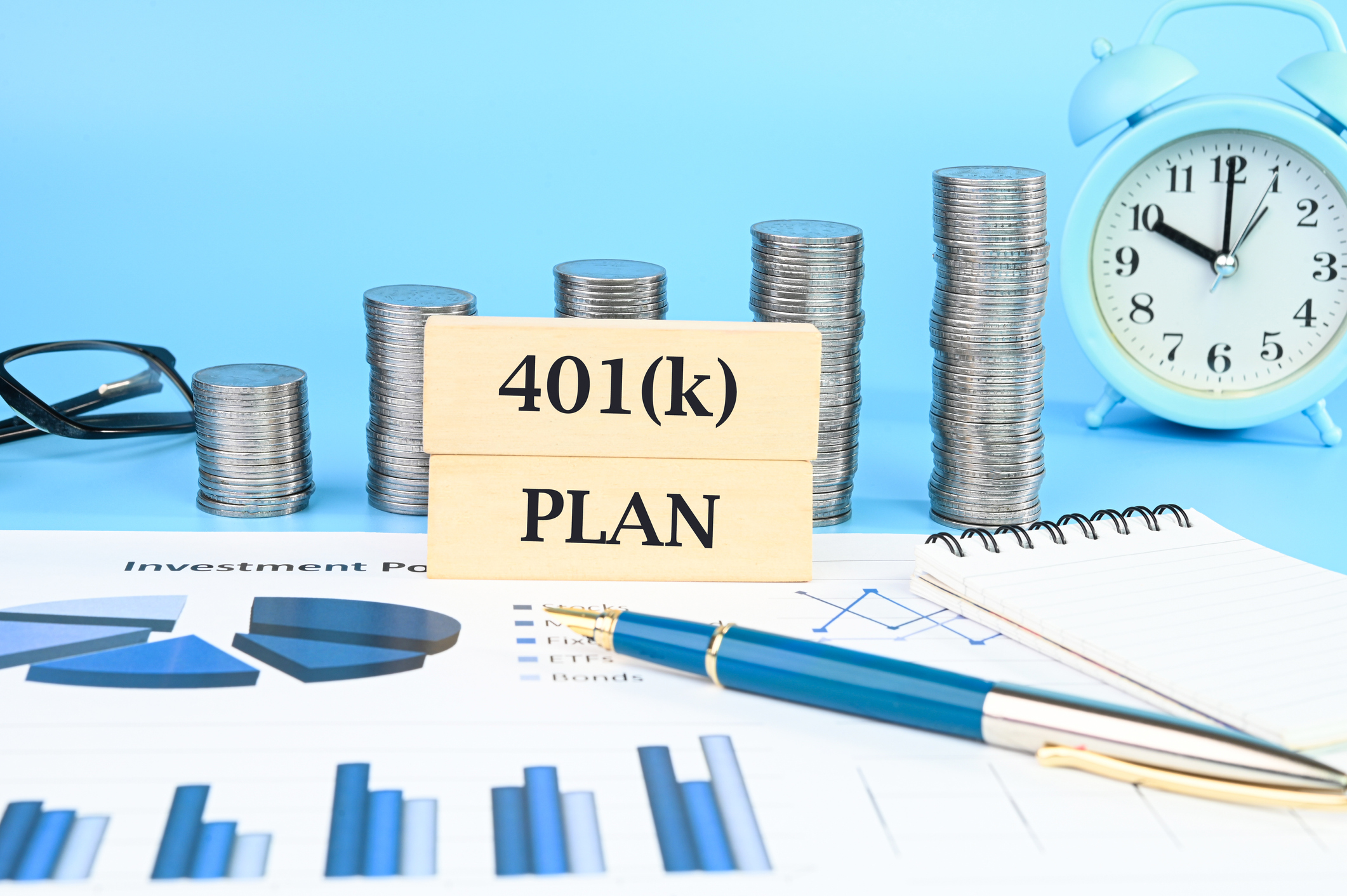After all we've suffered over the past decade, it's easy to see why we're flocking to the investment equivalent of comfort food.
Heaps of supposedly super-safe Treasury bonds help us sleep at night after a diet of stocks left us stressed and hungry. And no wonder: The U.S. stock market has lost about 2% annualized over the past ten years, while Barclays Capital Aggregate Bond index, which measures high-quality bonds, gained a savory 6.5% a year.
Our appetites are reflected in the flow of money in and out of mutual funds. In June, the last month for which data was available, domestic-stock funds lost $6.1 billion more than they took in. In the same month, taxable-bond funds gained nearly $18.6 billion (mostly in short-term funds), and municipal-bond funds netted $1.6 billion.
From just $107.88 $24.99 for Kiplinger Personal Finance
Become a smarter, better informed investor. Subscribe from just $107.88 $24.99, plus get up to 4 Special Issues

Sign up for Kiplinger’s Free Newsletters
Profit and prosper with the best of expert advice on investing, taxes, retirement, personal finance and more - straight to your e-mail.
Profit and prosper with the best of expert advice - straight to your e-mail.
Fran Kinniry, a senior member of Vanguard's Investment Strategy Group, says that investor behavior today is "no different than it was in the late 1990s." During that rollicking bull market, he says, everyone wanted to be in big-company and technology stocks. The party ended in early 2000 with the bursting of the tech bubble.
Now investors have "disproportionately bought into fixed income," says Kinniry, and they may again be moving into the wrong place at the wrong time. This time the culprit is likely to be a jump in interest rates. Rates have been cranked so low by governments trying to stimulate their battered economies and by investors pouring money into supposedly safe bonds that they have nowhere to go but up. When that happens, prices of many bonds are sure to fall. And if the pessimists are right about a coming double-dip recession and lukewarm economic growth as far as the eye can see, bond investors may also be vulnerable to rising defaults among issuers of corporate, foreign and municipal bonds.
Given the performance of stocks over the past decade, you may be tempted to downplay them, or even avoid them altogether (see Your Mind & Your Money: How Biases Affect Your Portfolio). But even though stocks are more volatile than bonds, historically they have returned an average of four percentage points per year more. As a result, "rushing wholeheartedly into bonds can play havoc with a portfolio," says Kinniry.
[EMBED TYPE=POLL ID=23341]
A sleep-tight strategy
The best way to protect yourself from economic uncertainty, market anxiety and your own rash judgment -- and still produce a good yield -- is to assemble a portfolio of solid mutual funds that pay both good dividends and high interest. A well-diversified income portfolio should include some standards, such as funds that invest in utilities and real estate (we'll name our favorites in those and other categories later and offer suggestions for using them in your portfolio).
It should also include overseas investments. Owning foreign stocks and bonds offers two advantages. First, some of the highest-yielding securities come from overseas. Second, owning assets denominated in foreign currencies reduces the volatility of a portfolio.
Kathleen Gaffney, co-manager of Loomis Sayles Bond, says her fund owns government debt from both Mexico and Brazil with investment-grade ratings (meaning there's little likelihood that those countries will default on their obligations). Not only are such countries growing faster than most developed nations, their capital markets are becoming mature and their governments more stable.
U.S. investors can take advantage of differences in economic and business cultures overseas. Jesper Madsen, lead manager of the Matthews Asia Dividend Fund, points out that many firms going public in Asia are family-owned and that the best way for the owners to take money out of a company is to pay dividends, allowing family members and investors to share the wealth. Likewise, governments that spin off their "crown jewels" to the public want to keep income flowing back to their coffers through dividends.
Below, we describe ten great funds for putting more cash in your pocket. For the latest data on these and more than 3,000 other funds, try our Fund Finder.
Bond funds
Willing to go anywhere
By investing in a go-anywhere fund such as Loomis Sayles Bond (symbol LSBRX), you essentially accept above-average risk in return for the possibility of above-average gains. That this fund is riskier than most bond funds became apparent in 2008, when it lost 22.1%, trailing the Barclays bond index by a whopping 27 percentage points. Because managers Dan Fuss and Kathleen Gaffney typically own a large helping of high-yield, or junk, bonds (those rated double-B or lower), as well as bonds from developing nations, the fund took a hit when investors bailed out of anything smacking of risk during the financial crisis and rushed into Treasuries.
It would have been tempting after that disastrous performance to strike Loomis Sayles Bond from the Kiplinger 25, the list of our favorite no-load funds. But we recognized that the 2008 market cataclysm might have been a once-in-a-lifetime event, and we remained confident in the abilities of Fuss and Gaffney, two of the industry's most-experienced bond pickers. Our faith has been rewarded. Loomis Sayles gained 36.8% in 2009, crushing its benchmark by 31 points, and 3.9% in the first half of this year.
Fuss and Gaffney have an excellent command of economic trends and also excel at identifying attractively priced bonds. Gaffney says the fund currently holds a lot of government bonds from Canada, Australia and New Zealand. Why? Those countries produce metals and other raw materials that developing nations, such as China, need to fuel their rapid growth. This demand bodes well for the currencies of resource-rich nations. If their currencies strengthen against the dollar, U.S.-based investors will benefit.
Loomis Sayles Bond would not be immune to a rise in interest rates. The fund's average duration, a measure of interest-rate sensitivity, recently stood at 6 years. That suggests that the fund's shares would lose about 6% if rates rose one percentage point.
Foreign focus
As its name suggests, Loomis Sayles Global Bond (LSGLX) invests in bonds from all over the world. At last report, it had about one-third of its assets in U.S. bonds and most of the rest in investment-grade bonds from developed nations, such as Germany, Japan and the United Kingdom. Much like sibling Loomis Sayles Bond, though, Global Bond will stray beyond the typical boundaries of its category. For example, it recently had 14% of its assets in junk bonds. Still, the fund's average credit quality is a solid double-A.
Global shares the somewhat eclectic style of Loomis Sayles Bond, but it has its own strategy and its own management team, consisting of Kenneth Buntrock, David Rolley and Lynda Schweitzer. The fund lost a relatively modest 8.8% in 2008, then gained 22.3% in '09. The fund's average duration is 5.3 years.
Saving on taxes
Over the past three years, the municipal-bond market has morphed from a relatively safe haven to what some see as an accident waiting to happen. A few years back, half of muni bonds were insured. Now, with the disintegration of the bond-insurance business, only about 10% of new munis come to market with that protection. On top of that, some observers suggest that we may see a wave of defaults as states and cities cope with falling revenues and enormous obligations for the pensions and health care of current and retired workers.
Mark Sommer, manager of Fidelity Intermediate Municipal Income (FLTMX), says that the worries are overblown. He says that state and local governments can raise taxes to pay interest and that many of these bonds are tied to key services, such as water and sewer. "Such services are so essential that people won't stop paying for them," he says. Still, Sommer and his analysts carefully sift through thousands of bonds to find IOUs that will pay off even in this tough economic climate. They do a good job, as can be seen by Municipal Income's ability to rank consistently near the top of its category (medium-maturity muni funds). The fund, a member of the Kiplinger 25, currently yields 2.5%. That's the equivalent of 3.8% if you're in the top 35% federal tax bracket. The fund's average duration is 5 years.
Dabbling in exotic markets
John Carlson, who runs Fidelity New Markets Income (FNMIX), says investors should be nervous about countries with weak financial regulation and poor fiscal discipline. These days, though, the places with those problems are not where New Markets invests, but rather are in parts of Western Europe, Japan and, yes, the U.S.
Carlson's fund invests primarily in bonds issued by emerging nations and, to a lesser degree, companies based in them. Virtually all of the bonds are denominated in dollars, so currency fluctuation is not an issue. Carlson favors democracies with independent central banks and a record of fiscal discipline -- something that many developed countries seem to lack. Two-thirds of the fund's holdings are investment-grade (triple-B or higher).
New Markets Income is more volatile than most bond funds (it lost 18.2% in 2008 and rocketed up 44.6% last year). But the fund's current yield of 5.5% is too tempting to pass up. (Fidelity does not publish New Income's duration; most of the bonds it holds have long maturities, so it would certainly feel the sting of rising rates overseas.)
Jewel in the junk pile
Don't expect a kiddie ride if you put your money in something referred to as "junk." Junk-bond issuers -- those with low credit ratings -- tend to sink or swim with the health of the economy. And the prices of the bonds themselves typically rise and fall with stocks. Fidelity High Income (SPHIX) tries to play it safe in a dangerous neighborhood by focusing on the better brands of junk. Manager Fred Hoff recently had 70% of the fund's assets in bonds rated double-B and single-B. He will, however, dip into choppier, triple-C-rated bonds when he thinks they have been unfairly hammered.
Performance has been remarkably consistent. High Income lagged its peers badly in 2001, Hoff's first year as manager. But in the eight years from 2002 through 2009, it has been in the top 40% of its category seven times. High Income yields a hefty 8.3%. For junk bonds, moves in interest rates aren't nearly as important as investor perceptions of the health of the economy and the issuing companies.
Stock Funds
No heroics needed
The past ten years have been trying for stock investors. But by adroitly investing mostly in large, dividend-paying firms, Brian Rogers drove T. Rowe Price Equity Income (PRFDX) to a gain of nearly 4% annualized over the period, an average of 5.4 percentage points per year ahead of Standard & Poor's 500-stock index. Historically, dividends have accounted for some 40% of the stock market's total return.
Moreover, dividend-paying stocks are generally less volatile than non-payers. All this makes a dividend-rich fund such as Equity Income, a member of the Kiplinger 25, ideal for an income portfolio.
Rogers, who has steered Equity Income since its 1985 launch and is now chairman of the Baltimore-based fund company, searches for under-valued stocks with above-average yields. Despite what he calls a "long-and-winding road of a recovery," he says he's finding plenty of compelling opportunities: "You can construct a really interesting basket of stocks with an average yield of 3% to 4% without taking a heroic stance."
Paying more and more
Following a tried-and-true strategy, Vanguard Dividend Growth (VDIGX) invests in companies that manager Donald Kilbride thinks are likely to raise their payouts regularly. Since Kilbride took over in February 2006, the fund has returned about 1% annualized. That isn't much, but it's four points a year better than the S&P 500's results.
Buying rising-dividend stocks is a particularly sound approach for these turbulent times. Companies that continually boost their dividends usually generate steady profit growth and show that they're committed to sharing their growing wealth with investors. Kilbride crunches the numbers to determine how much he thinks companies will pay out in five years, but he also tries to get inside the heads of executives to get a sense of their philosophy about dividends. One side strategy: Kilbride looks for retailers that have saturated the market with stores because they can pay more when expansion options dry up.
REIT recovery
Following in the footsteps of the housing market, whose collapse helped bring down the economy in 2007 and 2008, commercial real estate has also fallen on hard times. But that hasn't stopped real estate investment trusts from staging a remarkable rebound. After stumbling badly in '07 and '08, property-owning REITs soared 51% over the past year.
So it's safe to own REITs again, right? That's not the right way to think about investing in these stocks, says David Lee, manager of T. Rowe Price Real Estate (TRREX), which gained 53.6% over the past year. REITs, which invest in all sorts of commercial properties, represent an asset class that provides above-average income and tends to move somewhat independently of other assets. So REITs should always have a place in any portfolio.
Traditionally, REITs have yielded roughly 6%. Today, yields are at about 4%, the result of the recent rally and the real estate slump, which has cut into REITs' profits. But REITs will boost payouts when the economy picks up and cash flow improves, Lee says. "I'm not saying when that will happen," he adds. "That's why you diversify -- you don't know where the next big return will come from."
Power play
Utilities have a reputation for dependability. The companies themselves are fairly stable -- after all, people run the A/C and watch TV no matter the economy. But even a safe harbor can become overpriced, as utilities did after gaining an annualized 25% from 2003 to 2007. The Dow Jones utility average tumbled 28% in 2008, showing that even this sedate sector can be vulnerable to a market meltdown. Still, with an average yield of 4.5%, utilities belong in an income portfolio.
The problem is, which fund? The no-load utility funds are unimpressive. So our pick is Franklin Utilities (FRUAX), run by one of the best-known sellers of load funds. Managed by John Kohli since 1998 (a co-manager joined this year), Franklin Utilities focuses on higher-quality utilities. It has outpaced the Dow utility average by an average of 2.1 points per year over the past ten years. We're reluctant to suggest that you pay a commission to buy this fund, but if you can dodge the load by buying it through an adviser or your 401(k) plan, do so.
Yields from the Far East
By investing in Asian stocks, you can have your cake and eat it, too. "We've been told for many years that you can't have high dividends and high growth in the same company," says Madsen, of Matthews Asia Dividend Fund (MAPIX). But in many Asian countries, that's a common occurrence.
The fund has had a strong run since its October 2006 launch. It lost 26.0% in 2008, 15 points less than the average Asia-Pacific fund, and jumped 47.6% last year, beating its peer group by 12 points.
Madsen says he focuses on small and midsize firms that "cater to the growing wealth of Asian households." He "anchors" the portfolio with more-mature companies that offer high yields, and he adds a layer of smaller companies with lower yields but greater growth potential. All of Asia Dividend's holdings, he adds, have "growing cash flows and very strong balance sheets, which helped a great deal during the downturn."
Putting them into action
You can add some of these funds to your existing holdings or use them to create a diversified portfolio. If you're looking for a 50/50 mix between stocks and bonds, put 30% of your money in Price Equity Income and 10% apiece in Price Real Estate and Matthews Asia Dividend. For the fixed-income part of the portfolio, allot 25% to Loomis Sayles Bond, 5% to Loomis Global Bond and 10% each to Fidelity High Income and Fidelity New Markets Income. The portfolio yields 4%.
Profit and prosper with the best of Kiplinger's advice on investing, taxes, retirement, personal finance and much more. Delivered daily. Enter your email in the box and click Sign Me Up.

-
 Gold and Silver Shine as Stocks Chop: Stock Market Today
Gold and Silver Shine as Stocks Chop: Stock Market TodayStocks struggled in Friday's low-volume session, but the losses weren't enough to put the Santa Claus Rally at risk.
-
 Don't Wait Until January: Your Year-End Health Checklist to Kickstart 2026
Don't Wait Until January: Your Year-End Health Checklist to Kickstart 2026Skip the fleeting resolutions and start the new year with a proactive plan to optimize your longevity, cognitive health, and social vitality.
-
 Premium Rewards Cards: More Perks, Higher Fees
Premium Rewards Cards: More Perks, Higher FeesSome issuers are hiking the annual fee on their flagship luxury credit cards by hundreds of dollars. Are they still worth using?
-
 Smart Ways to Invest Your Money This Year
Smart Ways to Invest Your Money This YearFollowing a red-hot run for the equities market, folks are looking for smart ways to invest this year. Stocks, bonds and CDs all have something to offer in 2024.
-
 Vanguard's New International Fund Targets Dividend Growth
Vanguard's New International Fund Targets Dividend GrowthInvestors may be skittish about buying international stocks, but this new Vanguard fund that targets stable dividend growers could ease their minds.
-
 Best 401(k) Investments: Where to Invest
Best 401(k) Investments: Where to InvestKnowing where to find the best 401(k) investments to put your money can be difficult. Here, we rank 10 of the largest retirement funds.
-
 7 Best Stocks to Gift Your Grandchildren
7 Best Stocks to Gift Your GrandchildrenThe best stocks to give your grandchildren have certain qualities in common. Here, we let you know what those are.
-
 How to Find the Best 401(k) Investments
How to Find the Best 401(k) InvestmentsMany folks are likely wondering how to find the best 401(k) investments after signing up for their company's retirement plan. Here's where to get started.
-
 How to Master Index Investing
How to Master Index InvestingIndex investing allows market participants the ability to build their ideal portfolios using baskets of stocks and bonds. Here's how it works.
-
 The Best Vanguard ETFs to Buy
The Best Vanguard ETFs to BuyThe best Vanguard ETFs all feature rock-bottom fees, large asset bases and long trading histories. Here are a few of our favorites.
-
 Best Banks for High-Net-Worth Clients
Best Banks for High-Net-Worth Clientswealth management These banks welcome customers who keep high balances in deposit and investment accounts, showering them with fee breaks and access to financial-planning services.
